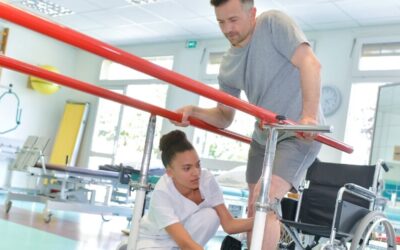Maybe you birthed your 1st baby vaginally 10 weeks ago and things down there are still feeling weird.
Is something going to fall out? What is this back ache? The dragging in your pelvis is dragging you down.
Or maybe you’ve battled menopause, and just when you think your body has settled, you notice a bulge between your legs when you’re in the shower. It feels like a golf ball. Seriously, what is that?!
My dears, that is a prolapse. It is a slipping down of the bladder, uterus or bowel into the vagina. It occurs because the pelvic floor muscles and connective tissues become weak or loose.
Great.
What If I Do Nothing About It?
It is essential you check up with a GP at the bare minimum.
After that, you can know that it will probably stay the same (sometimes better, sometimes worse).
BUT you might be grumpy because you’re super uncomfortable standing up in the kitchen cooking tea. Or you might stop turning up to tennis or never go back to running because you feel horrible in your pelvis after trying.
While avoiding aggravating activities will make it feel better, you won’t be happy about missing out.
You have enough on in your life and there’s no need to put up with this.
5 Steps to Success
1. Find out what type and stage of prolapse you have after a conversation and intimate examination by our women’s health trained physiotherapist Kirsty. Find out more about intimate examinations
2. Learn how to contract your pelvic floor muscles and commence strength training. Kirsty will set you up for success with a 12-week program using apps and helpful devices.
3. Minimise constipation through the use of a toilet stool, modifying your fluid and fibre intake, and learning to relax your pelvic floor muscles.
4. Coordinate your core when exercising. It is easy to strain and push pressure down into your prolapse but tightening your lower tummy and lifting your pelvic floor can counteract the force.
5. Perhaps a pessary. It is a silicone device worn inside the vagina to lift and support the prolapse. They come in many shapes and sizes, and are a safe long-term management option. While they must be professionally fitted, you can learn to remove and reinsert them yourself.
Kirsty can walk you through all of the above to ensure your success. She can also provide tips on emptying the bladder and bowel properly, sexual pain and addressing irritation.
What about surgery?
If 3-4 months of physiotherapy is unsuccessful then surgery could be a fantastic option. Kirsty will give accurate advice about surgery and direct you to the right specialist to continue the conversation.
To prevent repeat surgery, it is really important to strengthen the pelvic floor and learn to minimise the downward pressures that coughing, lifting, exercise and straining can create.
So, whether it is lifting your grandkids, going for a run, having a good belly laugh or being intimate with your partner, you now have a strong plan for getting back to what you cherish the most.
Further info here: https://www.safetyandquality.gov.au/publications-and-resources/resource-library/treatment-options-pelvic-organ-prolapse-pop
How to Meal Prep Recipes for a Healthy Week
Embarking on a journey towards a healthier lifestyle can often feel like an uphill battle, fraught with time constraints and dietary dilemmas. However, with a bit of planning and creativity, meal prepping can transform this challenge into an achievable — and maybe...
How the NDIS Works – A Comprehensive Overview
The National Disability Insurance Scheme (NDIS) is a crucial part of Australia's social welfare system, offering a new way of providing individualised support to people with permanent and significant disabilities. Unlike traditional disability support systems, the...
Concussion Treatment: Tips for a Smooth Recovery
A concussion is a type of brain injury that can have serious physical, cognitive, and emotional implications—Especially if left untreated. Whether you're an athlete, office worker, or caregiver, it's important to understand the signs, symptoms, and recovery process...



